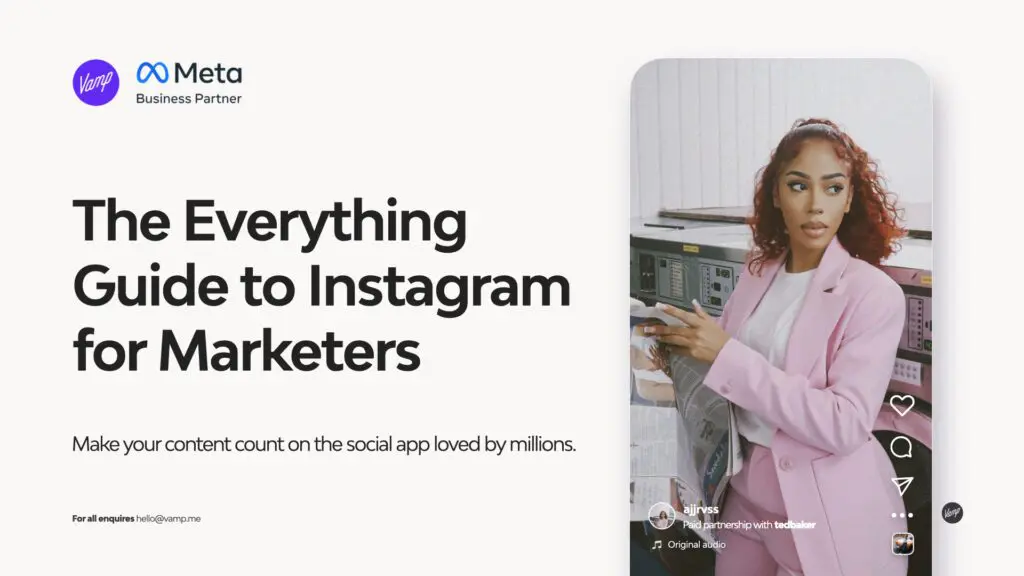
Short-form video is the hottest content format right now, thanks to TikTok and Reels.
In 2020, TikTok’s popularity soared, scoring the highest social media engagement rate per post and 800 million monthly active users. Not to be outdone, Instagram responded with their own short-form feature ‘Reels’ in August.
Early insights revealed Instagram’s attempt to win over users was working. 61% of TikTok users who have used Reels say they’ll spend more time on Instagram, given Reels is “basically the same as TikTok”. Meanwhile Social Media Today found that both are neck and neck with average video views. Reels get an average of 1.2M views and TikTok’s get an average of 1.92M views.
But TikTok’s engagement trumps Reels’. TikTok's get an average of 231,935 likes and 2,141 comments. Whereas Reels’ get an average of 110,675 likes and 811 comments.
Both have their strengths and weaknesses. So which one should you be putting your time and talents into? Learn the similarities and differences between TikTok and Reels below.
Similarities
They are both for short-form video content.
Both allow creators to add music from their audio libraries and filters from their collections of editing tools.
Their feeds scroll the same in that there is an endless amount of videos lined up for users to watch and discover. However, there’s no auto-scroll on either, and users must scroll for the next video to play.
Both of their primary feeds are places for users to discover new content from creators they aren’t necessarily following.
The same popular trends and challenges can be found on both. Although, they usually start on TikTok and make their way over to Reels later.
Both are shoppable. Instagram has extended their shoppable features over to Reels and TikTok has partnered with Shopify to allow brands to advertise their products.
They both offer analytics including video views, likes, comments, shares and reach.
Both allow users to post videos of up to 60 seconds, however Reels is just testing this with some users.
Reels and TikTok ads are available globally.
TikTok offers users a Duet feature, which allows users to create a reaction clip, with the original and your new video playing side-by-side. Reels is also testing its own version called Remix.
Differences
Instagram is a platform for more polished and curated content, which means this expectation flows over to Reels. Whereas TikTok is a platform that allows for more raw, spontaneous content.
TikTok’s analytics also offer total play time, average watch time, audience location and traffic source types (where people discovered your video). Whereas Reels' bonus insights only include total plays and saves.
Reels doesn’t give business account holders access to their entire music library. Due to copyright infringement, business account holders only have access to Reels’ library of royalty free music, or they can upload their own sounds. Whereas all TikTok users, no matter their professional account, have access to every song TikTok offers.
When creating a Reel, the user must select an effect or filter prior to filming. Whereas TikTok users can apply effects and filters after taking a video. TikTok also offers a lot more editing tools, including voiceover effects. Something Reels doesn’t offer.
Their feeds may scroll similarly but their formatting is different. TikTok’s primary feed is the For You page (FYP), and its secondary feed is the Following feed. Whereas Reels only has one feed that shows new content from creators the user may not follow. Reels from creators they do follow will show up in their normal Instagram feed.
TikTok has interactive features such as Duet and Stitch, which are two different ways users can add other peoples videos to theirs. These are great for reaction videos and skits. Reels does not offer anything similar at the moment.
TikTok’s FYP algorithm works off user interactions (who and what type of content you’re engaging with and for how long), video information (hashtags and songs you interact with) and account settings (your first language and your set location). Whereas the Reels algorithm prioritises content from the accounts you interact with the most, as well as the type of content you typically engage with i.e. beauty tutorials or cooking recipes.
Due to TikTok’s FYP algorithm, it is much easier for your content to go viral on TikTok compared to Reels. This is because it doesn’t take into consideration how well your past content has performed or how many followers you have.
TikTok offers a feature that allows users to leave questions for creators to answer with a video. These questions can be found on the creators profile and other users can like the questions they would like to see answered. This is a great tool to help build your audience and engage with your followers. Reels doesn’t offer anything similar.
Reels’ caption limit is 2,200 characters, whereas TikTok’s caption limit is 100 characters. Reels also previews the caption and allows viewers to read more if they choose, unlike TikTok which shows the entire caption, covering a portion of the video.
Need more TikTok and Reels content? Here’s how to go viral on TikTok. And here are the three steps to uploading your first Reel.





